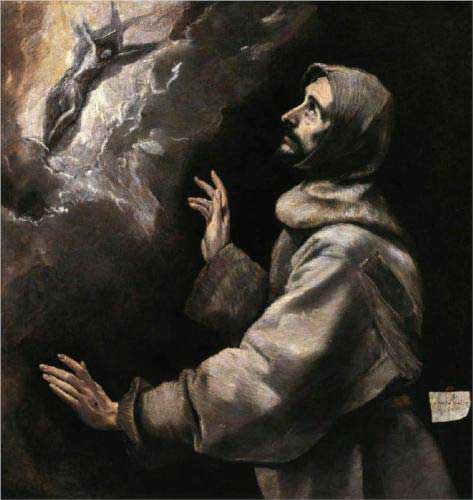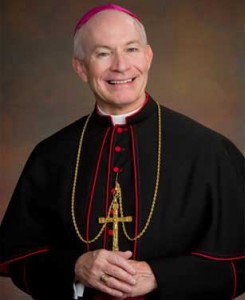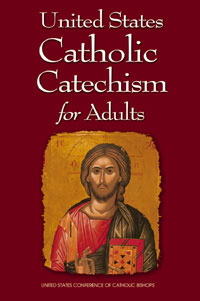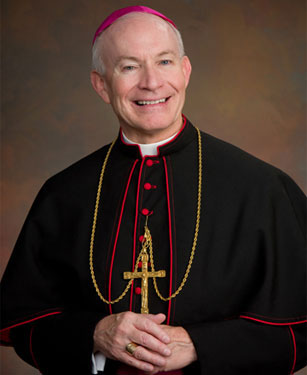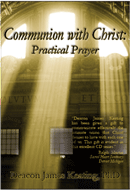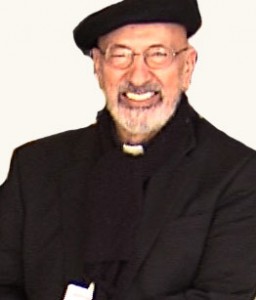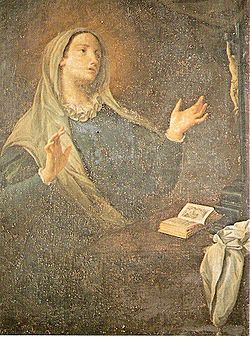It was wonderful to talk with Deacon Keating about his book “Spousal Prayer: Â A Way to Marital Happiness”. Â Filled with practical suggestions, it never “dumbs” the importance of the message by presenting to us yet another “self-help” book, but rather it elevates our understanding and experience of true martial intimacy. Â A small book, filled with tremendous potential for couples in any stage of their relationship, if they are willing to enter into the union Christ has waiting for them. Don’t miss this gem.
of the message by presenting to us yet another “self-help” book, but rather it elevates our understanding and experience of true martial intimacy. Â A small book, filled with tremendous potential for couples in any stage of their relationship, if they are willing to enter into the union Christ has waiting for them. Don’t miss this gem.
[powerpress]
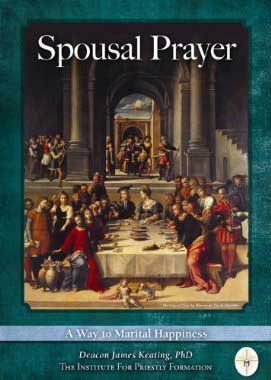 You can find the book here
You can find the book here
From the description:
Deacon James Keating’s newest book, Spousal Prayer: A Way to Marital Happiness affirms that the sharing of hearts is a necessary commitment in both marriage and prayer. If we can learn what the key elements to sharing the heart are and equally what the key elements to receiving the heart of another are, then we will know the greatest of intimacy in both prayer and marriage. The mingling of the love of spouse with and in the love of God is and has always been the foundation for a life of peace, creativity, and vibrancy, not to mention sanctity. In fact, we cannot even understand what marriage is unless we look at how Christ loved His Bride, the Church, till the end (Jn 13:1). For the baptized, Christ has joined His love for the Church to the Sacrament of Marriage and Marriage, to His love for the Church. Each couple is called to allow Jesus to bring them into this great love of His. The couple is not supposed to do all the work of love; they are called to let Jesus gift them with His own spousal love. In other words, couples should let Jesus live His spousal love for the Church over again in their own love for one another. They do this by simply asking Him in prayer to do so and by sharing their needs and desires with Him. Marriage is not a self-help relationship; it is a deep partnership with Christ.
Tags: Church, Jesus, love, marriage, relationship
This entry was posted on Tuesday, December 31st, 2013 at 6:55 am
You can follow any responses to this entry through the RSS 2.0 feed.
CW3 St. Francis of Assisi – Conversion, Crisis, Relationship, and Prayer  – The 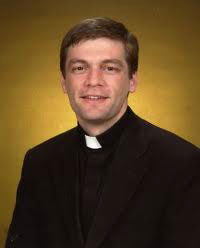 Great Cloud of Witnesses: Guides for Prayer with Fr. Mark Cyza
Great Cloud of Witnesses: Guides for Prayer with Fr. Mark Cyza
[powerpress]
Fr. Mark Cyza discusses the prayer of St. Francis of Assisi. Â He speaks of the radical intimacy of St. Francis and Jesus Christ and how it was born from the saint’s continuing conversion and how it was fueled by his relationship with Christ in prayer. Â How can his prayer be a beacon for our own: the center of our spiritual life must be focused on Christ….if it gazes on anything else we fall off track.
Resources:
Biographies of him were written soon after his death, by people who knew him and by people who interviewed those who knew him. We have many near contemporary sources, aside from Francis’ own writings, through which we can come to know Francis.
The Little Flowers of St. Francis is the only one of these source documents commonly available on the web for reading free. There are several sources, which we give here for you to read this work, or listen to it, if you download the MP3s from CCEL.
Another copy of The Little Flowers, this one from EWTN
Tags: Assisi Conversion, CCEL, jesus christ, Mark Cyza, miracles, Paschal Robinson, prayer, relationship, Resources Fr, Saint Francis, Sister Bookshelf Biographies
This entry was posted on Saturday, October 5th, 2013 at 12:02 am
You can follow any responses to this entry through the RSS 2.0 feed.
[powerpress]
Msgr. Esseff reflects on the life and teachings of St. Padre Pio. Â He shares personal stories from his relationship with St. 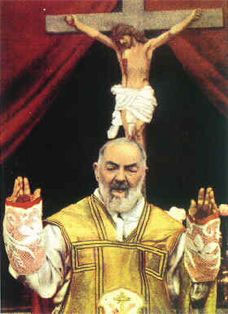 Pio.
Pio.
Gospel    LK 8:16-18
“No one who lights a lamp conceals it with a vessel
or sets it under a bed;
rather, he places it on a lampstand
so that those who enter may see the light.
For there is nothing hidden that will not become visible,
and nothing secret that will not be known and come to light.
Take care, then, how you hear.
To anyone who has, more will be given,
and from the one who has not,
even what he seems to have will be taken away.â€
Tags: Jesus, padre pio, reflection, relationship
This entry was posted on Monday, September 23rd, 2013 at 11:33 am
You can follow any responses to this entry through the RSS 2.0 feed.
[powerpress]
Archbishop Lucas offers insights on the US Catholic Catechism for Adults Chapter 26:
The Second Commandment forbids the wrong use or misuse of God’s name. There are a number of ways in which this happens. Blasphemy uses the name of God and of Jesus Christ as well as those of the Blessed Mother and the saints in an offensive manner. The Catechism teaches that blasphemy consists “in uttering against God—inwardly or outwardly—words of hatred, reproach, or defiance†(CCC, no. 2148). This is gravely sinful. Habitual disrespect for God, displayed in cursing and even in the use of vulgar language, can create an attitude that erodes our relationship with the Lord.
At the same time, we recognize diminished culpability when the name of God is used because of an outburst of undisciplined speech due to passion or unexpected incitement to anger. We need to cultivate a persistent reverence for sacred names; if we do not, we can end up giving bad example and also fall into the sin of blasphemy. It should also be noted that in Scripture, the sometimes passionate language of the Prophets, in which they lament the troubles of their times and utter loud complaints to God, is not blasphemy or the taking of God’s name in vain. It is actually prayer addressed to God.
United States Conference of Catholic Bishops (USCCB)
The Most Reverend George J. Lucas leads the Archdiocese of Omaha.Â
For other episodes in the visit our Archbishop George Lucas page
This programs is based on:
More information can be found here.
We wish to thank the USCCB for the permissions granted for use of  relevant material used in this series.
Also we wish to thank Jim Carroll and Bruce McGregor  for his vocal talents in this episode.
[ezcc]
Tags: Archbishop Lucas, relationship, sin, USCCB
This entry was posted on Tuesday, February 5th, 2013 at 7:02 am
You can follow any responses to this entry through the RSS 2.0 feed.
Mary DeTurris Poust has once again brought us a spiritual work that speaks to us in the ordinary things of life.  In “Cravings:  A 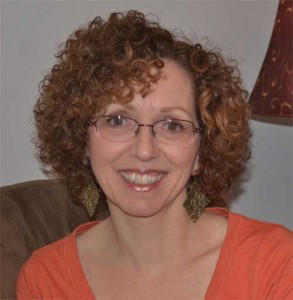 Catholic Wrestles with Food, Self-Image, and God” she takes on the monumental struggle most of us have with self-image and diet.  With humor and very practical suggestions, she helps us to see the blessings found in turning everything over to God and allowing Him to transform our love-hate relationship with food and the mirror.  By doing so, we can deepen our relationship with God and see the gifts He has for us everyday.  We also then can experience the greatest gift of all, His deep and abiding love for each of us as His beloved child.  Before you start your next diet, or if you “wrestle” with your body image, this is the book for you!  You won’t be disappointed.
Catholic Wrestles with Food, Self-Image, and God” she takes on the monumental struggle most of us have with self-image and diet.  With humor and very practical suggestions, she helps us to see the blessings found in turning everything over to God and allowing Him to transform our love-hate relationship with food and the mirror.  By doing so, we can deepen our relationship with God and see the gifts He has for us everyday.  We also then can experience the greatest gift of all, His deep and abiding love for each of us as His beloved child.  Before you start your next diet, or if you “wrestle” with your body image, this is the book for you!  You won’t be disappointed.
[powerpress]
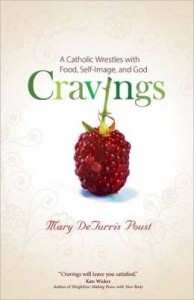 You can find the book here
You can find the book here
“Whether you’re tired of being obsessed with your weight, are hungry for inner peace even more than you’re hungry for food, or are desiring the freedom that comes with self-acceptance,Cravings will leave you satisfied.”–Kate Wicker, Author of Weightless: Making Peace with Your Body
“Another excellent tool in Mother Church’s hand to help feed God’s children with what they crave most: truth, the food of saints!” —Rev. Leo Patalinghug, Author of Grace Before Meals
Tags: Kate Wicker, Leo Patalinghug, love, relationship
This entry was posted on Monday, February 4th, 2013 at 12:27 pm
You can follow any responses to this entry through the RSS 2.0 feed.
USCCA31 Â Chapter 25
[powerpress]
Archbishop Lucas offers insights on the US Catholic Catechism for Adults Chapter 25:
The first three Commandments treat our relationship to God. The last seven concern our relationship with each other. The First Commandment calls us to have faith in the true God, to hope in him, and to love him fully with mind, heart, and will. We respond to God, who has created and redeemed us and extends his providential care to us every minute of each day. The First Commandment fosters the virtue of religion that moves us to adore God alone because he alone is holy and worthy of our praise.
United States Conference of Catholic Bishops (USCCB)
The Most Reverend George J. Lucas leads the Archdiocese of Omaha.Â
For other episodes in the visit our Archbishop George Lucas page
This programs is based on:
More information can be found here.
We wish to thank the USCCB for the permissions granted for use of  relevant material used in this series.
Also we wish to thank Matt Wilkom  for his vocal talents in this episode.
[ezcc]
Tags: faith, relationship, religion, USCCB
This entry was posted on Wednesday, January 30th, 2013 at 1:12 pm
You can follow any responses to this entry through the RSS 2.0 feed.
Episode 14 -The Way of Mystery: The Eucharist and Moral Living– The Eucharist summons us like a beacon.  Even in the face of scandal, the moral authority of the Church shines through the Eucharist and challenges us to follow Christ in moving forward and allowing our hearts to be transformed. Mortal sin, what is it and how does it effect our relationship with the Eucharist…with Christ? Being present at mass even if you shouldn’t receive…not allowing yourself to be separated from worship.
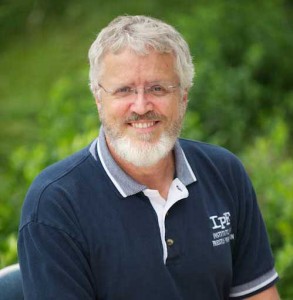
[powerpress]
Deacon James Keating, PhD, the director of Theological Formation for the Institute for Priestly Formation, located at Creighton University, in Omaha, is making available to â€Discerning Hearts†and all who listen, his series of programs entitled “The Way of Mysteryâ€.
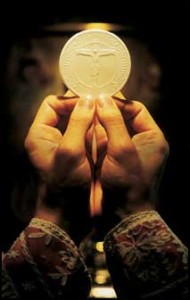 The Vatican II documents remind us that the spiritual journey is not made in a vacuum, that God has chosen to save us, not individually, but as The People of God. The Eucharist must help Christians to make their choices by discerning out of Christ’s paschal mystery. For this process to take place, however, Christians must first understand how the Eucharist puts them in touch with Christ’s passion, death, and resurrection, and what concrete implications being in touch with this mystery has for their daily lives.
The Vatican II documents remind us that the spiritual journey is not made in a vacuum, that God has chosen to save us, not individually, but as The People of God. The Eucharist must help Christians to make their choices by discerning out of Christ’s paschal mystery. For this process to take place, however, Christians must first understand how the Eucharist puts them in touch with Christ’s passion, death, and resurrection, and what concrete implications being in touch with this mystery has for their daily lives.
For more information on the “Institute of Priestly Formation†and for other material available by Deacon Keating, just click here
Don’t forget to pickup a copy of “Communion with Christ†, it is one of the best audio sets on prayer…ever!
Check out Deacon Keating’s “Discerning Heart†page
Tags: choices, creighton university, Deacon James Keating, relationship
This entry was posted on Monday, January 14th, 2013 at 3:06 pm
You can follow any responses to this entry through the RSS 2.0 feed.
[powerpress]
“Do you not know I am your Mother?” Â Msgr. Esseff reflects on the Great Mother of God, Mary Most Holy…Our Lady of Guadalupe. Â First, 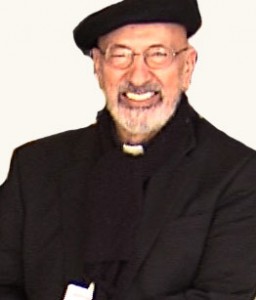 he discusses the image itself that was left for all of us. Â Then he talks about our relationship with her today!
he discusses the image itself that was left for all of us. Â Then he talks about our relationship with her today!
Ps 1:1Rv 11:19a; 12:1-6a, 10ab
and the ark of his covenant could be seen in the temple.A great sign appeared in the sky, a woman clothed with the sun,
with the moon under her feet,
and on her head a crown of twelve stars.
She was with child and wailed aloud in pain as she labored to give birth.
Then another sign appeared in the sky;
it was a huge red dragon, with seven heads and ten horns,
and on its heads were seven diadems.
Its tail swept away a third of the stars in the sky
and hurled them down to the earth.
Then the dragon stood before the woman about to give birth,
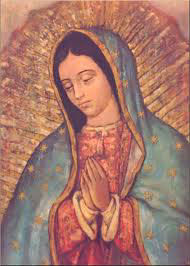
to devour her child when she gave birth.
She gave birth to a son, a male child,
destined to rule all the nations with an iron rod.
Her child was caught up to God and his throne.
The woman herself fled into the desert
where she had a place prepared by God.Then I heard a loud voice in heaven say:
“Now have salvation and power come,
and the Kingdom of our God
and the authority of his Anointed.”
Tags: heaven, John Esseff, our lady of guadalupe, reflection, relationship
This entry was posted on Wednesday, December 12th, 2012 at 5:42 am
You can follow any responses to this entry through the RSS 2.0 feed.
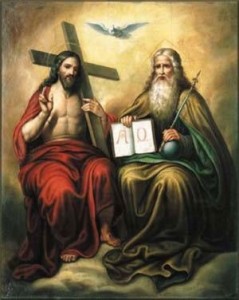 Msgr. Esseff spoke at a recent conference which was held in PA. in November 2011. In the 2nd talk he speaks of our true relationship with the Father in Heaven, the role of the Blessed Virgin Mary, and the 3 levels of the heart and the place of Jesus in our lives.
Msgr. Esseff spoke at a recent conference which was held in PA. in November 2011. In the 2nd talk he speaks of our true relationship with the Father in Heaven, the role of the Blessed Virgin Mary, and the 3 levels of the heart and the place of Jesus in our lives.
Be sure to visit “Building a Kingdom of Love”
Tags: catholic, catholic podcast, catholic prayer, cathollc spirituality, John Esseff, msgr. john esseff, reconciliaiton, relationship, sin, the Blessed Virgin Mary, true relationship
This entry was posted on Tuesday, December 6th, 2011 at 11:14 am
You can follow any responses to this entry through the RSS 2.0 feed.
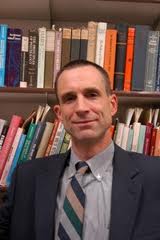 Episode 2- What is the relationship between religion and science?
Episode 2- What is the relationship between religion and science?
[powerpress]
 Question 1 Article 2. Whether sacred doctrine is a science.
Question 1 Article 2. Whether sacred doctrine is a science.
Objection 1: It seems that sacred doctrine is not a science. For every science proceeds from self-evident principles. But sacred doctrine proceeds from articles of faith which are not self-evident, since their truth is not admitted by all: “For all men have not faith” (2 Thess. 3:2). Therefore sacred doctrine is not a science.
Objection 2: Further, no science deals with individual facts. But this sacred science treats of individual facts, such as the deeds of Abraham, Isaac and Jacob and such like. Therefore sacred doctrine is not a science.
On the contrary, Augustine says (De Trin. xiv, 1) “to this science alone belongs that whereby saving faith is begotten, nourished, protected and strengthened.” But this can be said of no science except sacred doctrine. Therefore sacred doctrine is a science.
I answer that, Sacred doctrine is a science. We must bear in mind that there are two kinds of sciences. There are some which proceed from a principle known by the natural light of intelligence, such as arithmetic and geometry and the like. There are some which proceed from principles known by the light of a higher science: thus the science of perspective proceeds from principles established by geometry, and music from principles established by arithmetic. So it is that sacred doctrine is a science because it proceeds from principles established by the light of a higher science, namely, the science of God and the blessed. Hence, just as the musician accepts on authority the principles taught him by the mathematician, so sacred science is established on principles revealed by God.
Reply to Objection 1: The principles of any science are either in themselves self-evident, or reducible to the conclusions of a higher science; and such, as we have said, are the principles of sacred doctrine.
Reply to Objection 2: Individual facts are treated of in sacred doctrine, not because it is concerned with them principally, but they are introduced rather both as examples to be followed in our lives (as in moral sciences) and in order to establish the authority of those men through whom the divine revelation, on which this sacred scripture or doctrine is based, has come down to us.
For an online version of St. Thomas Aquinas’ “Summa” click here
“Christian Apologetics with Dr. R. R. Reno” explores numerous facets of faith and reason in the life of the Church and the world. Grounded on the work of giants, such as St. Thomas Aquinas, St. Bonaventure, Blessed John Newman, soon-to-be Blessed John Paul II, G. K. Chesterton, Blaise Pascal and Stephen Barr, Dr. Reno helps us to open our minds to make the journey to our hearts.
R. R. Reno is the editor at First Things: A Journal of Religion, Culture, and Public Life, and Professor of Theology, currently on leave from Creighton University. His theological work has been published in many academic journals. Essays and opinion pieces on religion, public life, contemporary culture, and current events have appeared in Commentary, and the Washington Post. In Fighting the Noonday Devil Reno suggests that putting ourselves at the disposal of what is real is what trains us for true piety. His other recent books include Genesis: Brazos Theological Commentary on the Bible and Sanctified Vision: An Introduction to Early Christian Interpretation of the Bible.
Tags: catholic, catholic podcast, catholic prayer, cathollc spirituality, christian apologetics, creighton university, faith, first things, r r reno, relationship, religion, science, st thomas aquinas, summa theologica
This entry was posted on Monday, May 23rd, 2011 at 12:11 am
You can follow any responses to this entry through the RSS 2.0 feed.
VATICAN CITY, 12 JAN 2011 (vatican.va) –
Dear Brothers and Sisters,
After Catherine of Siena and Catherine of Bologna, today I would like to speak to you about another Saint: Catherine of Genoa, known above all for her vision of purgatory. The text that describes her life and thought was published in this Ligurian city in 1551. It is in three sections: her Vita [Life], properly speaking, the Dimostratione et dechiaratione del purgatorio — better known as Treatise on purgatory — and her Dialogo tra l’anima e il corpo (cf. Libro de la Vita mirabile et dottrina santa, de la beata Caterinetta da Genoa. Nel quale si contiene una utile et catholica dimostratione et dechiaratione del purgatorio, Genoa 1551). The final version was written by Catherine’s confessor, Fr Cattaneo Marabotto.
Catherine was born in Genoa in 1447. She was the youngest of five. Her father, Giacomo Fieschi, died when she was very young. Her mother, Francesca di Negro provided such an effective Christian education that the elder of her two daughters became a religious.
When Catherine was 16, she was given in marriage to Giuliano Adorno, a man who after various trading and military experiences in the Middle East had returned to Genoa in order to marry.
Married life was far from easy for Catherine, partly because of the character of her husband who was given to gambling. Catherine herself was at first induced to lead a worldly sort of life in which, however, she failed to find serenity. After 10 years, her heart was heavy with a deep sense of emptiness and bitterness.
A unique experience on 20 March 1473 sparked her conversion. She had gone to the Church of San Benedetto in the monastery of Nostra Signora delle Grazie [Our Lady of Grace], to make her confession and, kneeling before the priest, “receivedâ€, as she herself wrote, “a wound in my heart from God’s immense loveâ€. It came with such a clear vision of her own wretchedness and shortcomings and at the same time of God’s goodness, that she almost fainted.
Her heart was moved by this knowledge of herself — knowledge of the empty life she was leading and of the goodness of God. This experience prompted the decision that gave direction to her whole life. She expressed it in the words: “no longer the world, no longer sin†(cf. Vita Mirabile, 3rv). Catherine did not stay to make her Confession.
On arriving home she entered the remotest room and spent a long time weeping. At that moment she received an inner instruction on prayer and became aware of God’s immense love for her, a sinner. It was a spiritual experience she had no words to  describe ( cf. Vita Mirabile, 4r).
It was on this occasion that the suffering Jesus appeared to her, bent beneath the Cross, as he is often portrayed in the Saint’s iconography. A few days later she returned to the priest to make a good confession at last. It was here that began the “life of purification†which for many years caused her to feel constant sorrow for the sins she had committed and which spurred her to impose forms of penance and sacrifice upon herself, in order to show her love to God.
On this journey Catherine became ever closer to the Lord until she attained what is called “unitive lifeâ€, namely, a relationship of profound union with God.
In her Vita it is written that her soul was guided and instructed from within solely by the sweet love of God which gave her all she needed. Catherine surrendered herself so totally into the hands of the Lord that she lived, for about 25 years, as she wrote, “without the assistance of any creature, taught and governed by God alone†(Vita, 117r-118r), nourished above all by constant prayer and by Holy Communion which she received every day, an unusual practice in her time. Only many years later did the Lord give her a priest who cared for her soul.
Catherine was always reluctant to confide and reveal her experience of mystical communion with God, especially because of the deep humility she felt before the Lord’s graces. The prospect of glorifying him and of being able to contribute to the spiritual journey of others alone spurred her to recount what had taken place within her, from the moment of her conversion, which is her original and fundamental experience.
The place of her ascent to mystical peaks was Pammatone Hospital, the largest hospital complex in Genoa, of which she was director and animator. Hence Catherine lived a totally active existence despite the depth of her inner life. In Pammatone a group of followers, disciples and collaborators formed around her, fascinated by her life of faith and her charity.
Indeed her husband, Giuliano Adorno, was so so won over that he gave up his dissipated life, became a Third Order Franciscan and moved into the hospital to help his wife.
Catherine’s dedication to caring for the sick continued until the end of her earthly life on 15 September 1510. From her conversion until her death there were no extraordinary events but two elements characterize her entire life: on the one hand her mystical experience, that is, the profound union with God, which she felt as spousal union, and on the other, assistance to the sick, the organization of the hospital and service to her neighbour, especially the neediest and the most forsaken. These two poles, God and neighbour, totally filled her life, virtually all of which she spent within the hospital walls.
Dear friends, we must never forget that the more we love God and the more constantly we pray, the better we will succeed in truly loving those who surround us, who are close to us, so that we can see in every person the Face of the Lord whose love knows no bounds and makes no distinctions. The mystic does not create distance from others or an abstract life, but rather approaches other people so that they may begin to see and act with God’s eyes and heart.
Catherine’s thought on purgatory, for which she is particularly well known, is summed up in the last two parts of the book mentioned above: The Treatise on purgatory and the Dialogues between the body and the soul. It is important to note that Catherine, in her mystical experience, never received specific revelations on purgatory or on the souls being purified there. Yet, in the writings inspired by our Saint, purgatory is a central element and the description of it has characteristics that were original in her time.
The first original passage concerns the “place†of the purification of souls. In her day it was depicted mainly using images linked to space: a certain space was conceived of in which purgatory was supposed to be located.
Catherine, however, did not see purgatory as a scene in the bowels of the earth: for her it is not an exterior but rather an interior fire. This is purgatory: an inner fire.
The Saint speaks of the Soul’s journey of purification on the way to full communion with God, starting from her own experience of profound sorrow for the sins committed, in comparison with God’s infinite love (cf. Vita Mirabile, 171v).
We heard of the moment of conversion when Catherine suddenly became aware of God’s goodness, of the infinite distance of her own life from this goodness and of a burning fire within her. And this is the fire that purifies, the interior fire of purgatory. Here too is an original feature in comparison with the thought of her time.
In fact, she does not start with the afterlife in order to recount the torments of purgatory — as was the custom in her time and perhaps still is today — and then to point out the way to purification or conversion. Rather our Saint begins with the inner experience of her own life on the way to Eternity.
“The soulâ€, Catherine says, “presents itself to God still bound to the desires and suffering that derive from sin and this makes it impossible for it to enjoy the beatific vision of Godâ€. Catherine asserts that God is so pure and holy that a soul stained by sin cannot be in the presence of the divine majesty (cf. Vita Mirabile, 177r).
We too feel how distant we are, how full we are of so many things that we cannot see God. The soul is aware of the immense love and perfect justice of God and consequently suffers for having failed to respond in a correct and perfect way to this love; and love for God itself becomes a flame, love itself cleanses it from the residue of sin.
In Catherine we can make out the presence of theological and mystical sources on which it was normal to draw in her time. In particular, we find an image typical of Dionysius the Areopagite: the thread of gold that links the human heart to God himself. When God purified man, he bound him with the finest golden thread, that is, his love, and draws him toward himself with such strong affection that man is as it were “overcome and won over and completely beside himselfâ€.
Thus man’s heart is pervaded by God’s love that becomes the one guide, the one driving force of his life (cf. Vita Mirabile, 246rv). This situation of being uplifted towards God and of surrender to his will, expressed in the image of the thread, is used by Catherine to express the action of divine light on the souls in purgatory, a light that purifies and raises them to the splendour of the shining radiance of God (cf. Vita Mirabile, 179r).
Dear friends, in their experience of union with God, Saints attain such a profound knowledge of the divine mysteries in which love and knowledge interpenetrate, that they are of help to theologians themselves in their commitment to study, to intelligentia fidei, to an intelligentia of the mysteries of faith, to attain a really deeper knowledge of the mysteries of faith, for example, of what purgatory is.
With her life St Catherine teaches us that the more we love God and enter into intimacy with him in prayer the more he makes himself known to us, setting our hearts on fire with his love.
In writing about purgatory, the Saint reminds us of a fundamental truth of faith that becomes for us an invitation to pray for the deceased so that they may attain the beatific vision of God in the Communion of Saints (cf. Catechism of the Catholic Church, n. 1032).
Moreover the humble, faithful and generous service in Pammatone Hospital that the Saint rendered throughout her life is a shining example of charity for all and an encouragement, especially for women who, with their precious work enriched by their sensitivity and attention to the poorest and neediest, make a fundamental contribution to society and to the Church. Many thanks.
For more on St. Catherine of Genoa visit Discerning Hearts post St. Catherine of Genoa…it’s all about Divine Love
Tags: benedict xvi, Catherine of Genoa, catholic, catholic podcast, catholic prayer, cathollc spirituality, experience, love, mystic, mystic of the Church, mystical communion, mystical experience, purgatory, relationship, souls in purgatory, st catherine of genoa, Vita Mirabile, women of the middle ages
This entry was posted on Wednesday, January 12th, 2011 at 1:01 pm
You can follow any responses to this entry through the RSS 2.0 feed.

